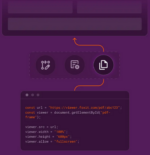In my first article in this series, I talked through some initial steps to take in order to uncover and understand your organization’s state of the SharePoint union. Having had your initial meetings regarding the current use and priorities of your existing SharePoint environment, you can now look objectively at the needs of your organization and begin planning the next steps. With multiple versions of SharePoint available, and the latest version—SharePoint 2013—promising to once again change the game, it is important for organizations to understand their current state.
The feedback to the first article was great, and I thank those of you who took the time to comment. This article outlines the upgrade options you have based on your current version.
If you are on SharePoint 2003, the most important thing to note is that you cannot upgrade directly from MOSS 2003 to SharePoint 2010. Sorry! Due to the vast differences in the applications and hardware requirements, your only option is to upgrade to 2007 and then 2010. There are unconfirmed rumors that you will be able to upgrade directly from 2003 to 2013, but that will only become fact once 2013 is released. In either case, you will need to go through a planning initiative in order to upgrade. Meeting with your deployment team (the people who were involved in the initial rollout, if possible) will assist in understanding the configuration and use of the current system.
If you are operating on the 2007 version of SharePoint, there is a good chance that you were in discussions about upgrading to 2010. Assuming you are still on 2007, assess where SharePoint is being used and how the upgrade will affect the organization. This is an important step regardless of which version you are moving to, as similar to SharePoint 2013, there are considerable front-end changes to which the organization will need to become accustomed. A typical upgrade from 2007 to 2010 is a matter of deciding whether an in-place, database-attached or hybrid approach is best; be sure that your resources spend the appropriate time evaluating both technical and business needs.
For those on SharePoint 2010, you still have some work to do before your upgrade, though it may be the smallest amount versus an upgrade from a previous version. Begin cataloging your current environment in order to prepare for your upgrade to 2013. I suggest creating a preliminary list of the components that make up your environment to use as a checklist once you perform your upgrade. Be sure to list the servers, service application databases, Web apps and site collections, databases, customizations, large lists, and views. Double-check each as you perform your trial upgrade and then again in your live environment. As the SharePoint 2013 trial versions are now available, you are welcome to set up a test environment and run some initial trials.
Regardless of which version you are currently on, focus the conversation not just on what is being used technically, but also on how SharePoint is being used from a practical business perspective. For example, if your SharePoint environment is being used heavily for document management, ensure that you have reviewed the data needs and amount of information currently in your database.
Each department typically has an individual who “owns” the data; try to meet with these people and get a sense of the information, type of data and how it is currently being used. You may find that it is beneficial to cleanse the data before it is upgraded into your new version. This is a good time to review your data needs across the organization and ensure that information is being used the right way by the right people. This means reviewing your taxonomy and content type configuration, and moreover their usage. What tags are being captured when documents are uploaded and how does that information benefit the business daily? Remember that if you are going to make a change, now is the time to begin those conversations while the business is forward-thinking on its next generation of SharePoint.
In the next and final article in this series, we will discuss additional steps in your State of the Union exercise, including training, governance and adoption of your environment, regardless of whether you are on an upgrade path.
Eric is the EVP of Systems Integration for Concatenate, a software firm focused on maximizing SharePoint through product innovation and systems integration based in Toronto. You can reach Eric by e-mail at ericr@concatenateinc.com or on Twitter at @rizinsights. Read his other SharePoint thoughts on his blog at www.ericriz.com.





